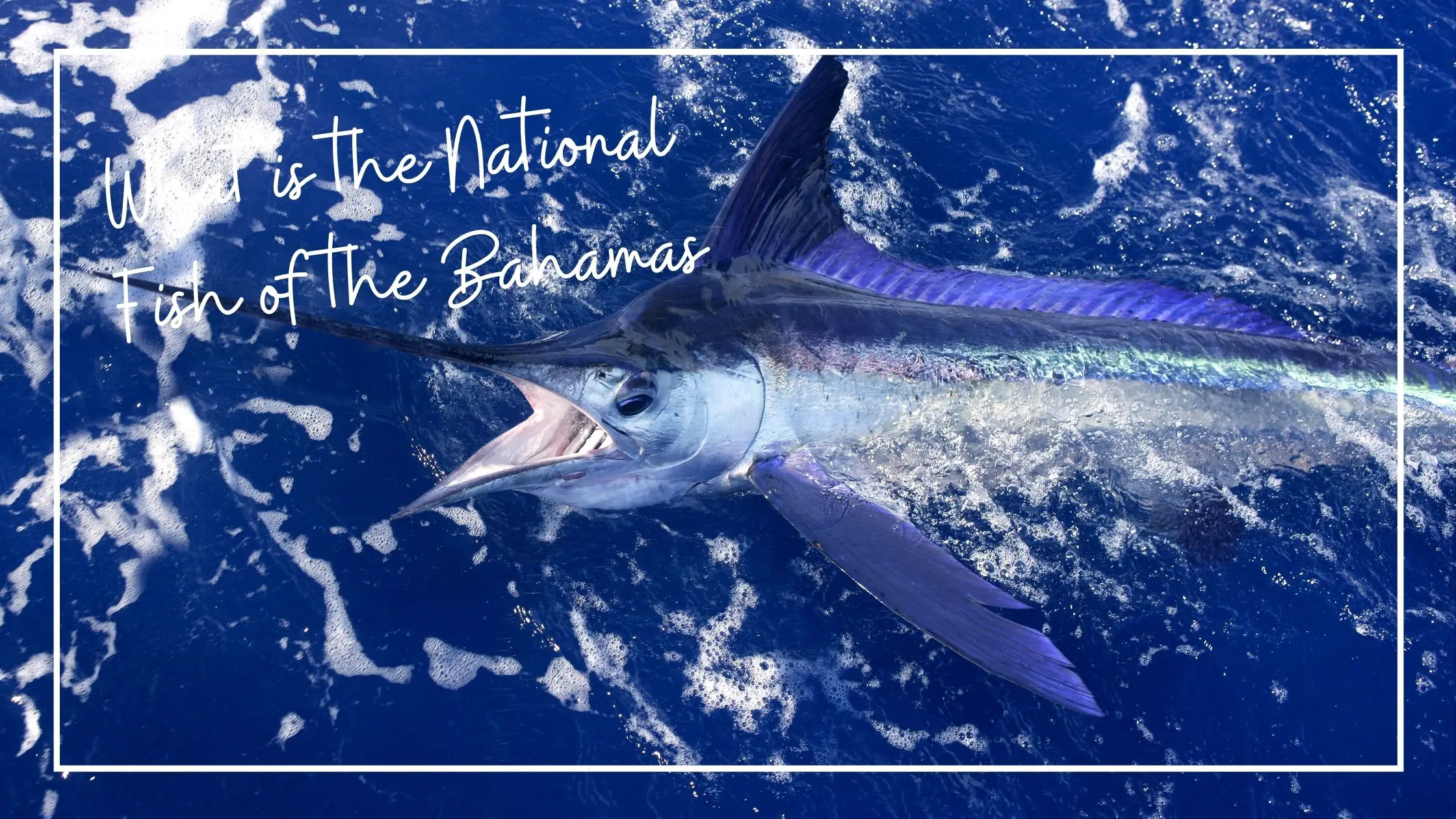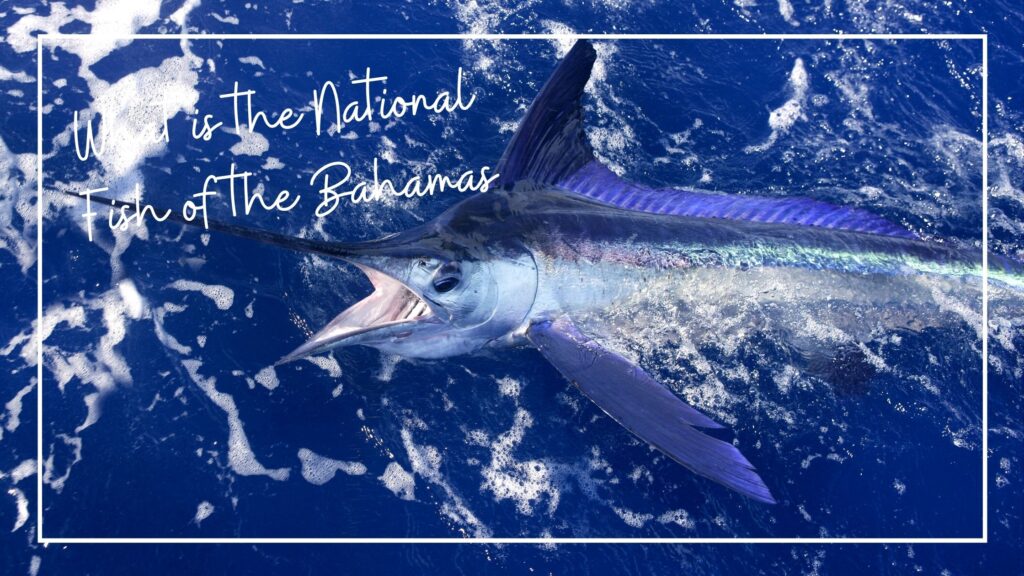
How do you choose from such a vast ocean surrounding the Bahamas to pick one fish to represent the Bahamas as its national fish? This question is a valid on and I had to do some research on it to find out.
What is The National Fish of the Bahamas? Makaira nigricans – The Atlantic Blue Marlin is the national fish of the Bahamas This large predatory fish is often found in the waters off the island of Bimini and in the Southern parts of the Bahamas. It is well known in the sports fishing arenas.
The Blue marlin can also be found on the Bahamian One Hundred Dollar bill. Giving it the local name the ‘Marlin’
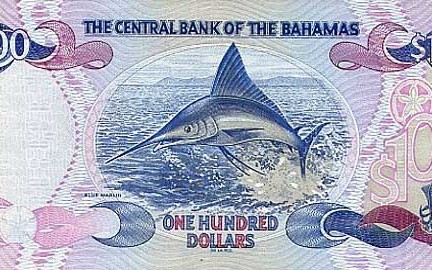
The Blue marlin actually exist in two sub species. The Atlantic blue marlin and the Pacific blue marlin.
Their scientific names are Makaira nigricans (Atlantic) & Makaira mazara (pacific), its also good to know that the Pacific Marlin growl larger than the Atlantic Marlin.
It is unclear who made the decision to make the Atlantic Blue Marlin the Bahamas national fish however we do know that it was selected around the same time as all the other national fauna and flora.
In the late 1960’s as the Bahamas was gearing up for indigence after the PLP won the government of the Bahamas. It was mandated that the Bahamas seek independence from Britain
During this time the selection of many national animals, songs, flag and other important matters were on the table for discussions.
However or who ever has not been found by our research team as yet but we are on the case.
More Information on The National Fish of the Bahamas
The elusive but very recognizable fish is very difficult to catch a glimpse of. If you search for a photo online you will notice that there are very few actual photographs of the Blue Marlin.
Although they spawn in large numbers very few reach maturity and even then they are difficult to find as they traverse a very large portion of the Atlantic ocean
Not only is it on the crest of the Bahamas but it is also printed on the one hundred dollar note. Giving the currency the name ‘marlin’
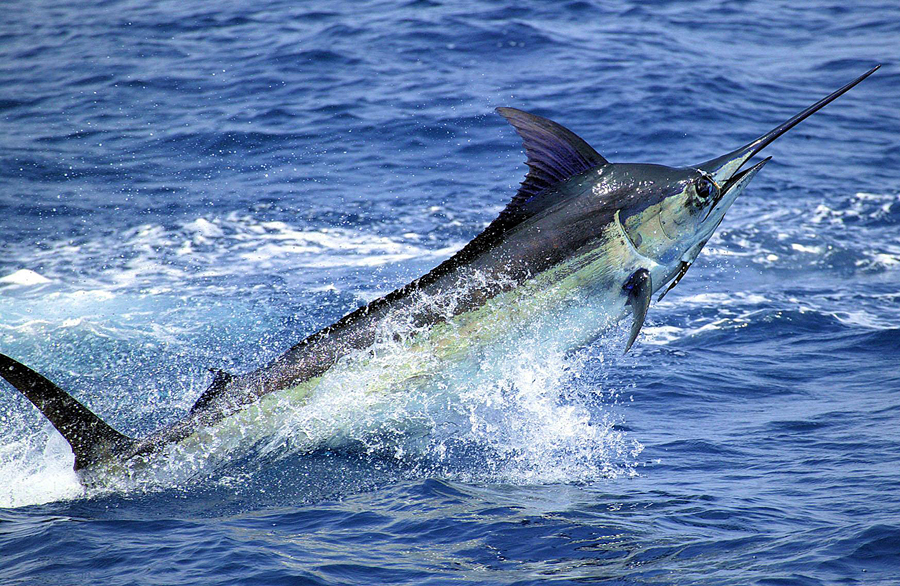
Blue Marlin Description
The blue marlin is one of the most distinctive fish in the sea. Their size and coloration makes them a prize among deep sea fishermen and once you have seen one you will never forget it.
Color
The Atlantic Blue Marlin has a Cobalt blue color on its dorsal side, the top half while the bottom half or the ventral side is a silvery white color. Some fish can also have distinctive rows of blue spots or stripes on their side.
Tail and Fins
The tail of the blue marlin is in the shape of a crescent and is extremely powerful. It is this shape combined with pure muscle that makes the marlin such a fast and strong swimmer.
The Bill
Blue marlins are from the spear fish family, this is evident in their spear shaped and long upper jaw. The bill of the marlin along with other spear fish are not actually for spearing fish.
Instead the fish thrashes their bill back and forth in a school of fish or at their prey to hit, shock and injure their prey before swooping around and swallowing it.
Size
The average size or rather length of a blue marlin is around 10-11 feet long. This length includes its bill which can be about 1/3 of its body length.
With a such a huge body they can weigh in anywhere from 250 to 400 pounds on averages however with the females of the species being larger than the males their weight can vary.
Females measure in at an average of 14 feet and if they live long enough can weigh near 1000 pounds.
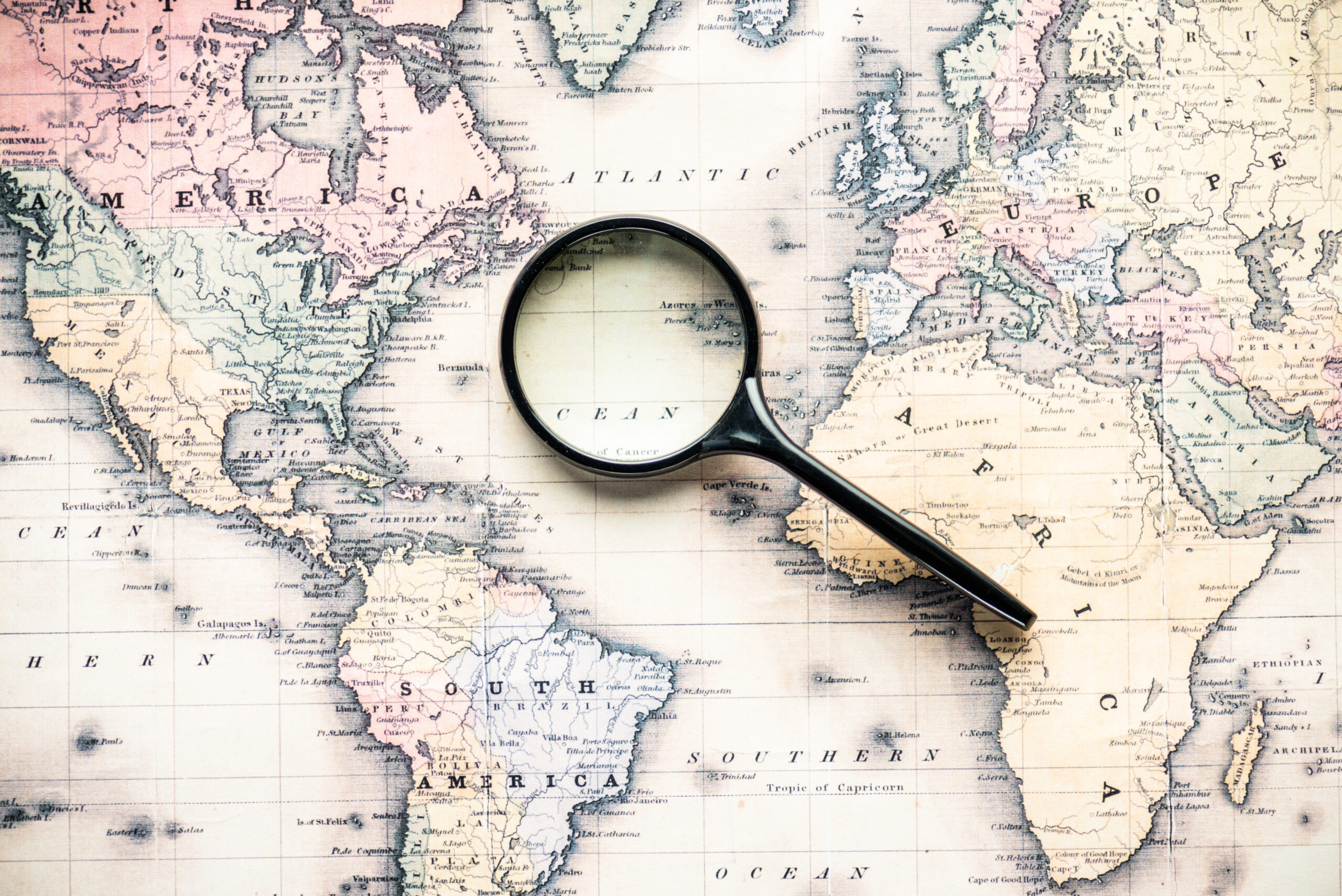
Habitat
There are various species of Marlins that can be found worldwide however the Atlantic Blue Marlin tends to stay in the warmer regions of the Atlantic Ocean.
The Atlantic Ocean is vast and covers both Northern and Southern Hemispheres of the earth. The Blue Marlin can be found in both regions. Through tagging exercises the Blue marlin has been found to be a migratory fish that follows the warm ocean currents for hundreds of miles.
Tagged fish have even shown multiple movements as far south as Venezuela, central to the Atlantic in the Bahamas and as far east as the West coast of Africa. It is believed that the warm currents of the ocean are responsible for their wide range and seasonal distribution throughout the Atlantic Ocean.
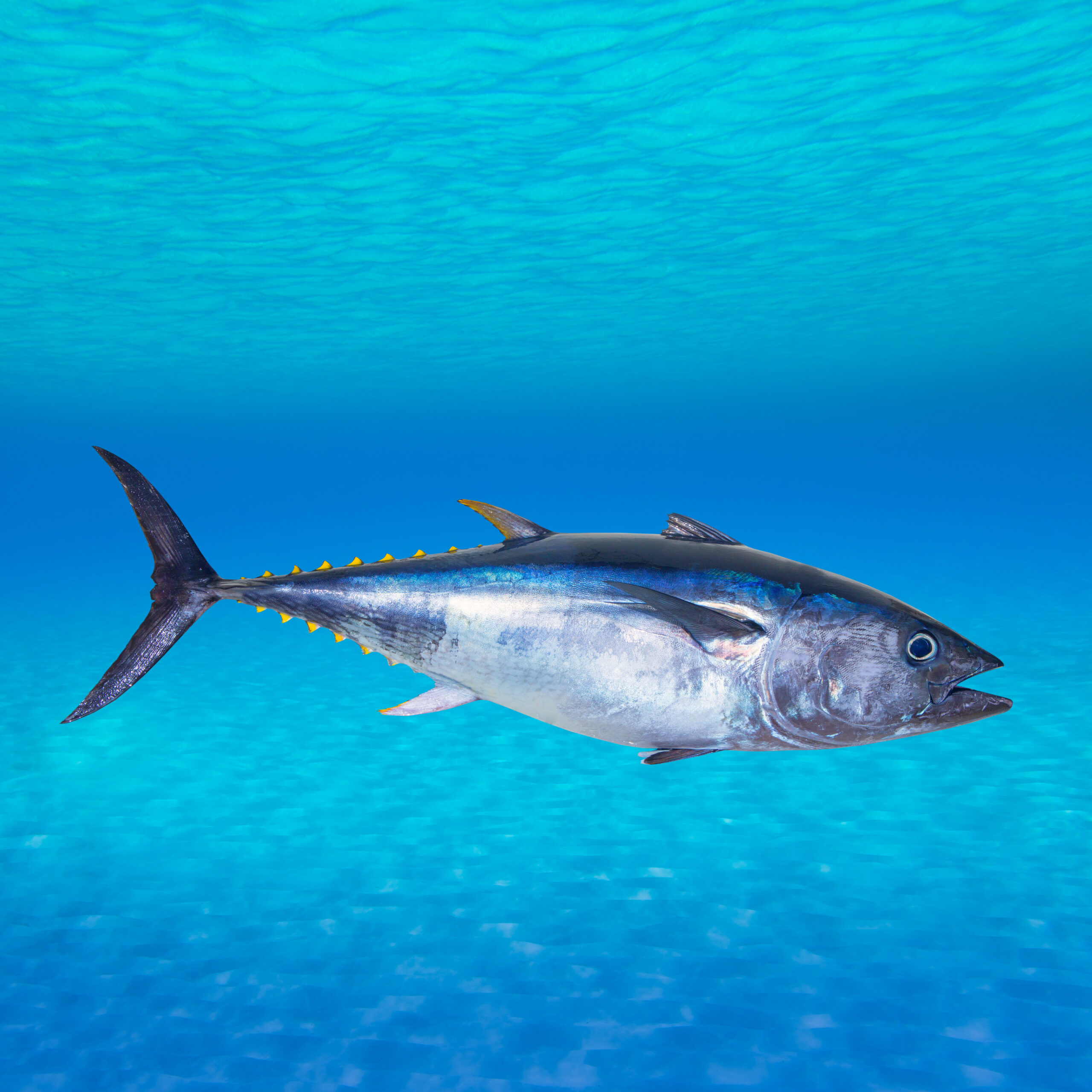
Diet
A full list of animals the Atlantic Blue Marlin hunts is not known but from the contents found in many fish we now have a good idea.
The Marlin tends to feed on mackerel and tuna mainly. It was initially thought however that the tuna may have been too big for the predatory fish and marlins have been known to travel with tuna schools.
The depth to which a marlin can dive is unknown but squid have been found among the contents of the marlin.
Other unusual findings include white fin marlins, and the ever popular and very large big eye tuna. This means that the Blue marlin is definitely a top predator.
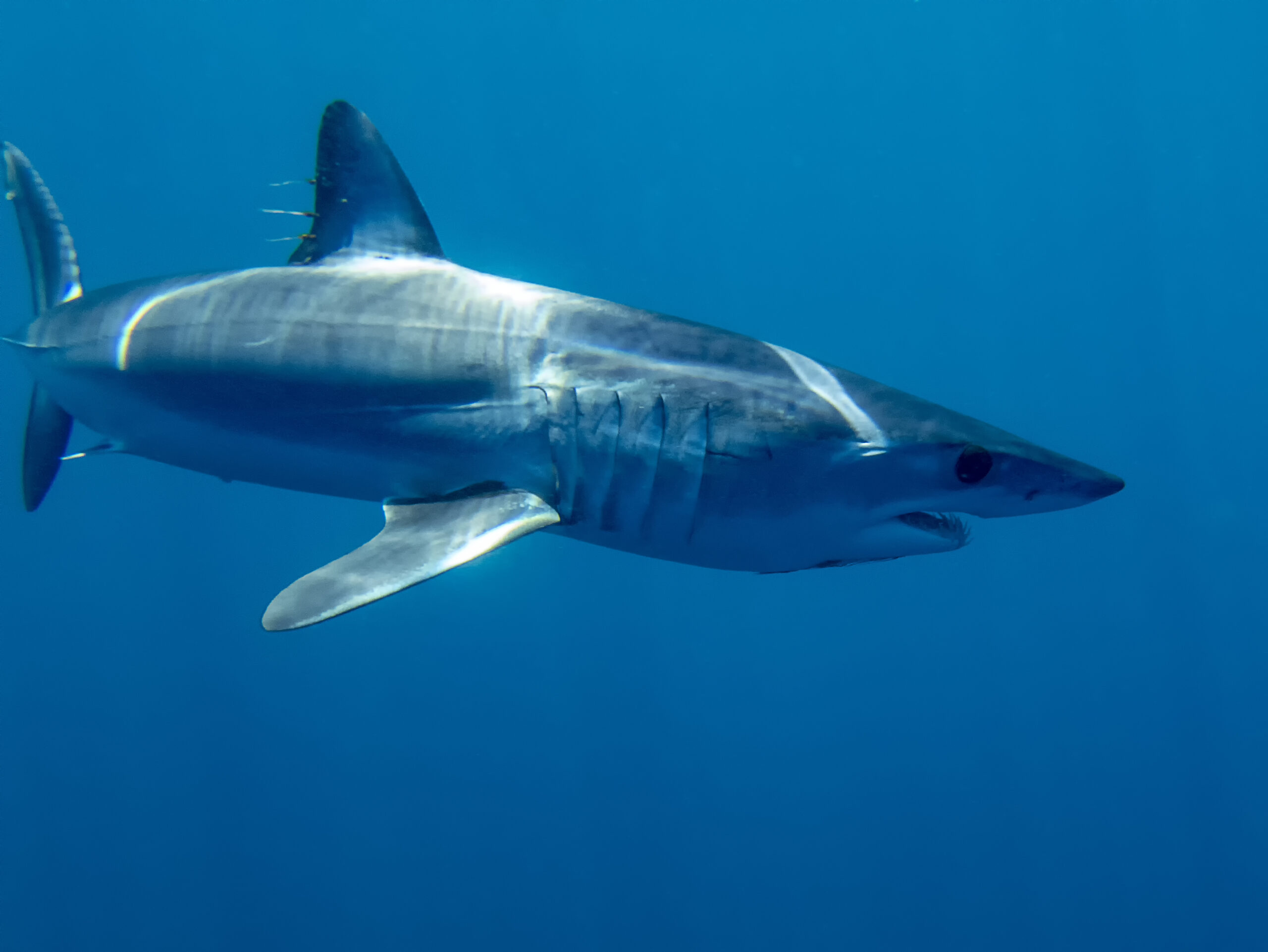
Predators
A fully matured Blue Marlin have very little if any predators. However there is always a bigger fish in the sea.
The Great white shark is known as a top predator of the sea and have been known to hunt marlins when ever they are in range. Their hunting strategy is unknown as to how they can keep up with such a fast fish.
Another potential predator is the short fin mako shark. It has the speed and power to take down a fully grown blue marlin.
Younger marlins are prey to other open ocean predators as they have not developed the speed size or power to avoid capture.
Reproduction
Amazingly the Blue marlin reaches sexual maturity at about 2 – 4 years of age and a female can mate up to 4 times in one season releasing millions of eggs.
Unfortunately the eggs and larvae become dinner for many other smaller fish and many do not survive, even less make it to maturity.
When you couple the life span of 18-27 years of a blue marlin and then the ability to spawn up to four times each mating season after the age of 4 you can see that their chances of survival is great to balance the ecology.
Marlins breed in late summer when the waters are warmer but they have also been known to spawn in early fall.
Human Impact to the National Fish of the Bahamas
Recreation
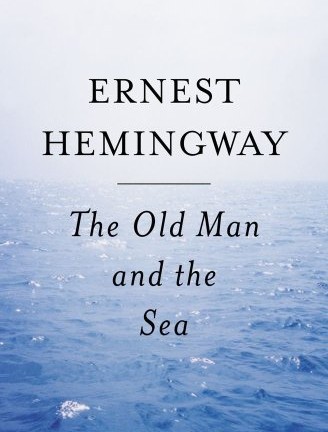
In the late 20’s and early 30’s, fishermen out for deep water fish came across the blue marlin off the coast of Bimini.
It soon sparked a run on hunting this powerful fish in the Bahamas and blue marlin sport fishing began. It has since grown in to a multi million dollar industry.
The fish has also been captured for food in particular for export to Japan where its meat is used in sashimi. Other cultures worldwide find the meat good for food while others find it not so good.
The sport soon got a boost when Ernest hemingway, who frequented the island of Bimin wrote his book The old man and the sea about a fisherman who battled the fish for three days.
The Bahamas soon got a boost in fishermen wanting to challenge themselves with capturing an Atlantic Blue Marlin.
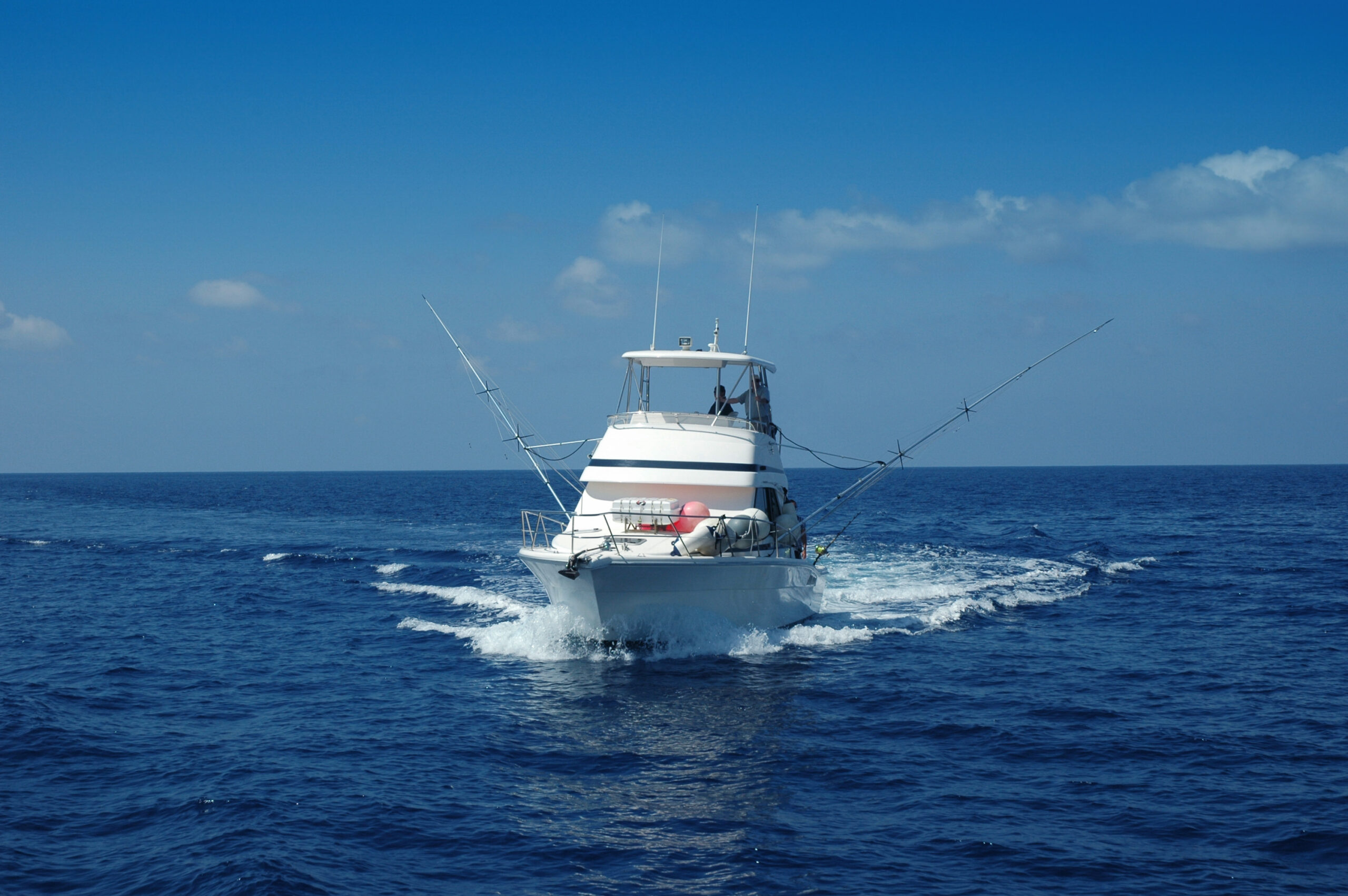
Industry
Due to modern manufacturing process and the advancement of technology waste products have been produced. there has been an upsearge of blue marlins with heavy metals in their muscles.
This level of mercury can cause sever poisoning if ingested. Texas has releases an advisory against the consumption of any marlin caught along the coast of Texas.
Blue marlin fishing is prevalent along the eastern and gulf coast of the United States, in Bermuda and the Bahamas.
The fish is hunted as a sport in many more seafaring countries in the Caribbean and south America.
A few places to consider for sport fishing in the Bahamas.
Conservation of the National Fish of the Bahamas
Although Marlins spend the majority of their life in open waters, many miles offshore and away from the coastline they are listed as a threatened species by the International Union for Conservation of Nature.
Marlins not only eat tuna but are known to travel with them as well . This makes them vulnerable to longline tuna fishing.
There are laws that state that any marlin caught during long line should be released many do not survive as they are often damaged during accidental capture.
Leading the efforts toward conservation are actually deep sea sport fishermen. Many tag the fish when caught and release them back into the ocean.
This form of catch and release ensures that there are more blue marlins for future generations.
Read more about the National Flora and Fauna of the Bahamas by taking a look at The Bahamas National Tree, The Bahamas National Flower and The Bahamas National Bird.
